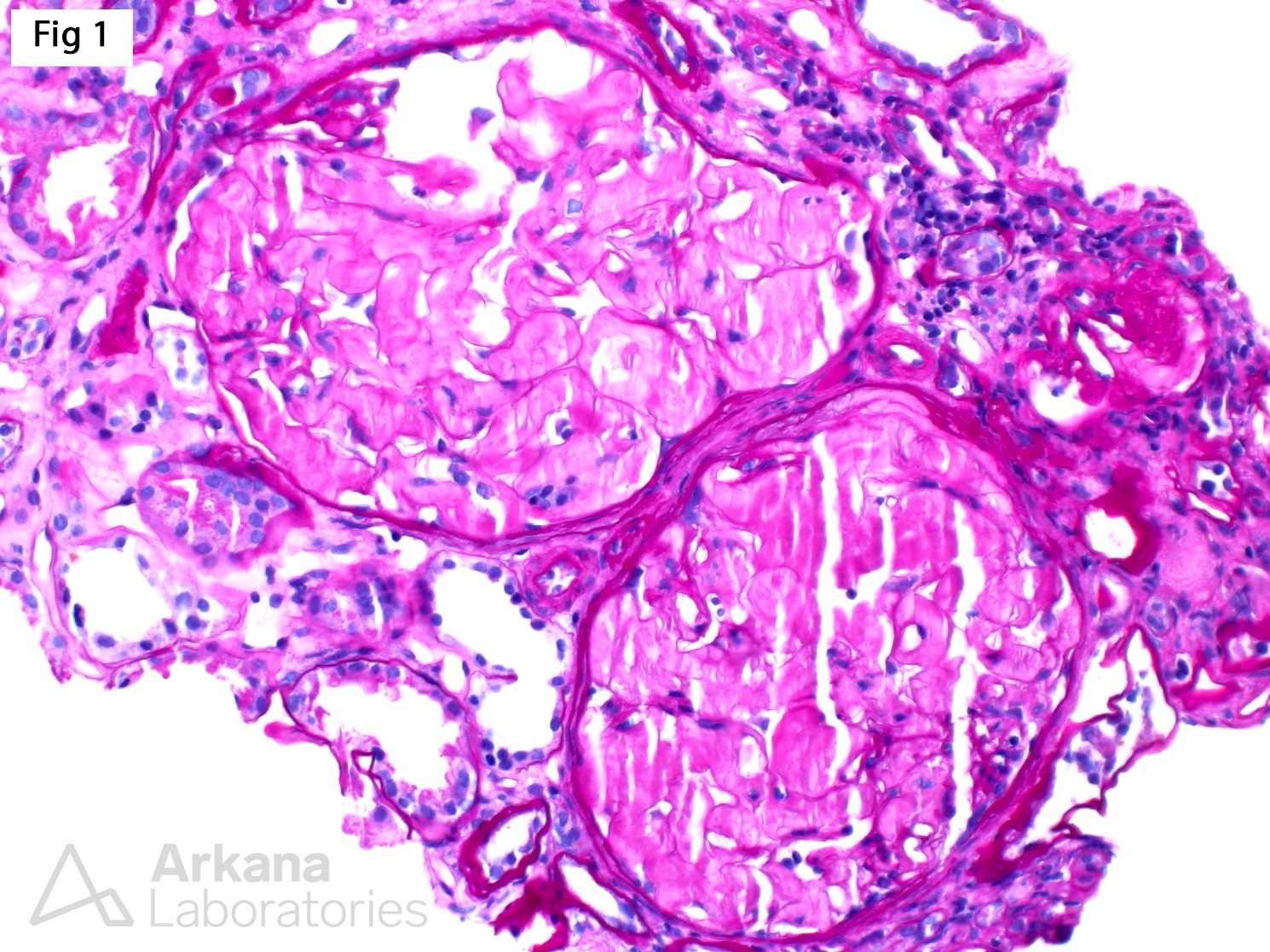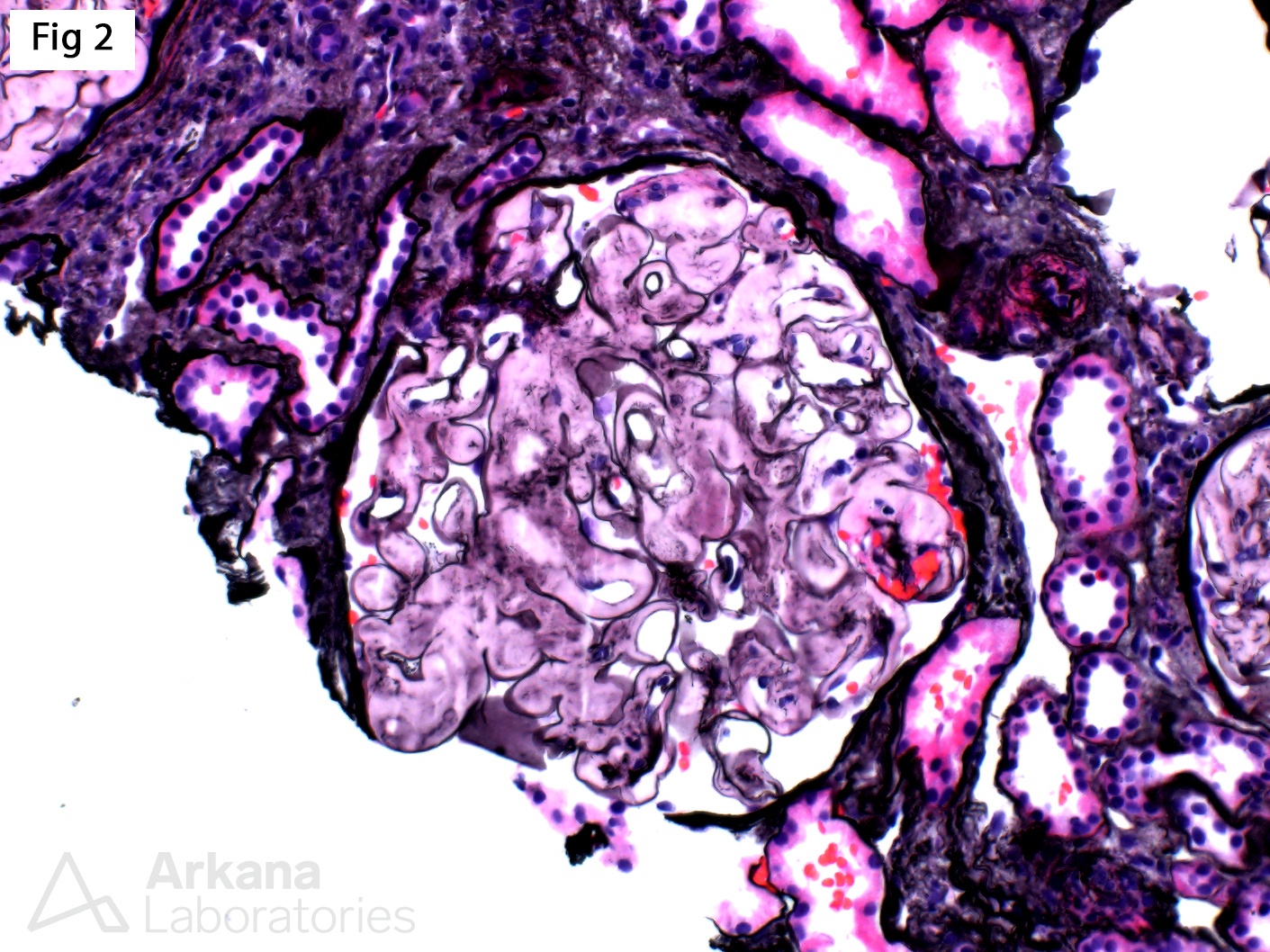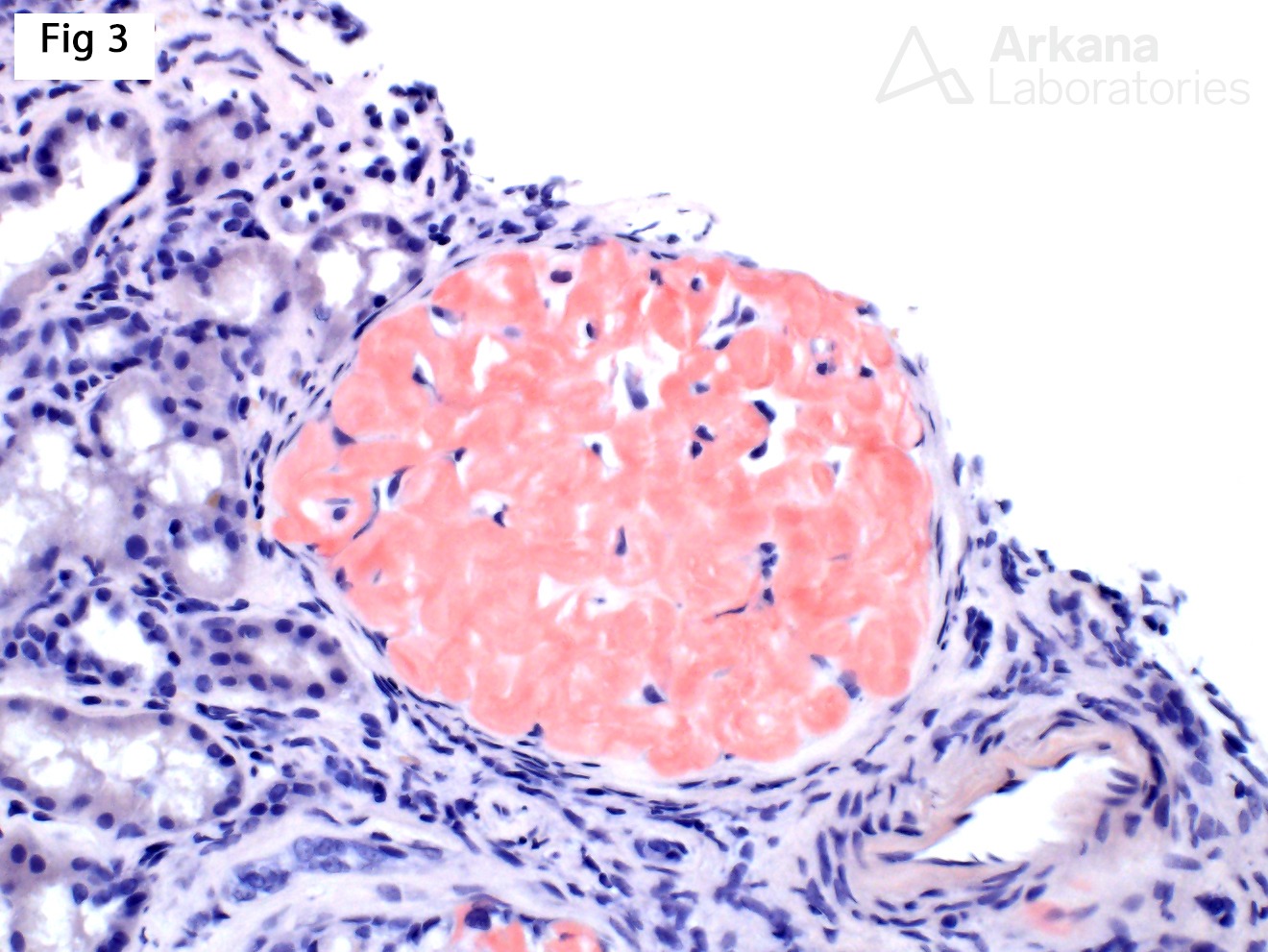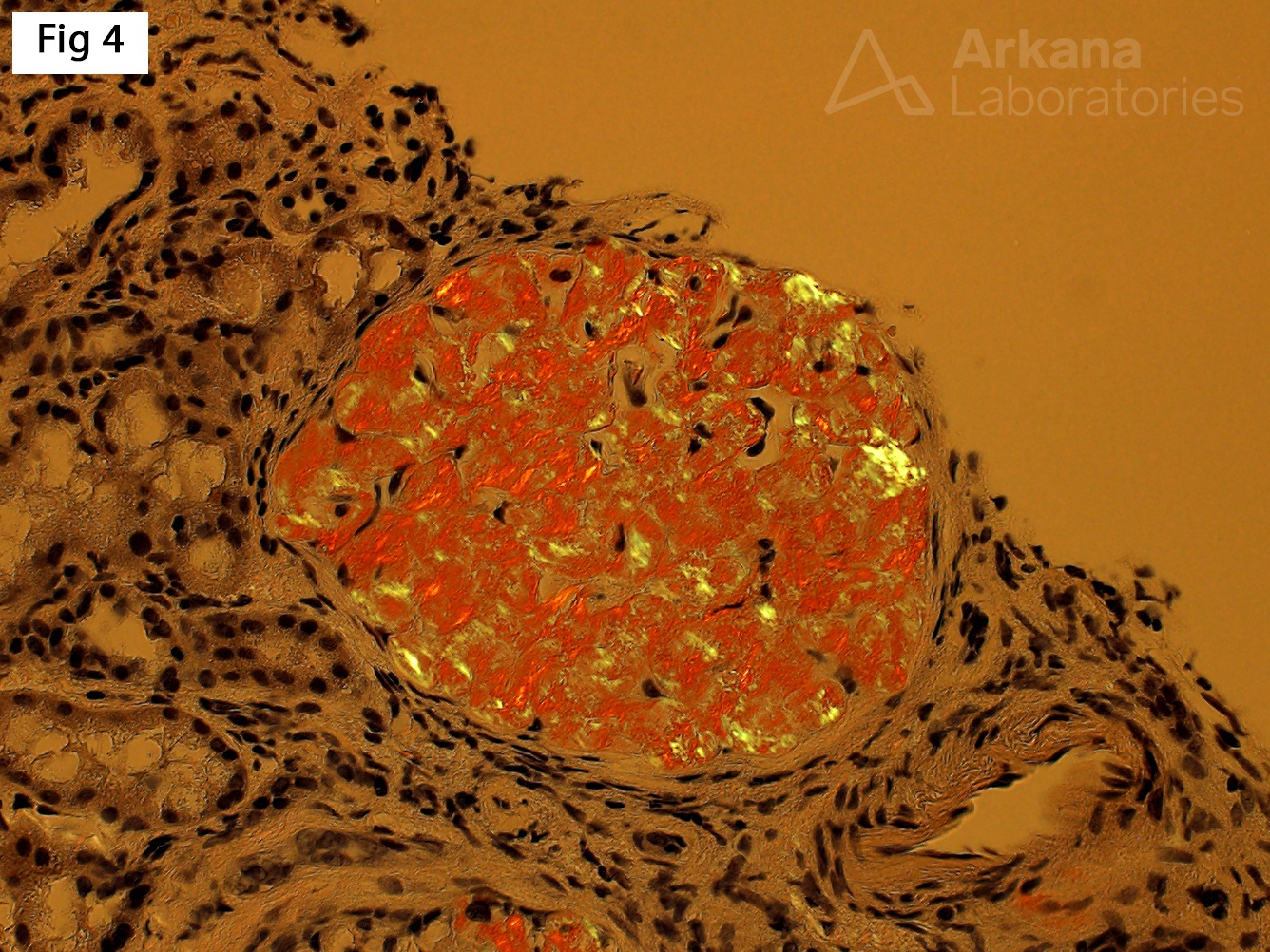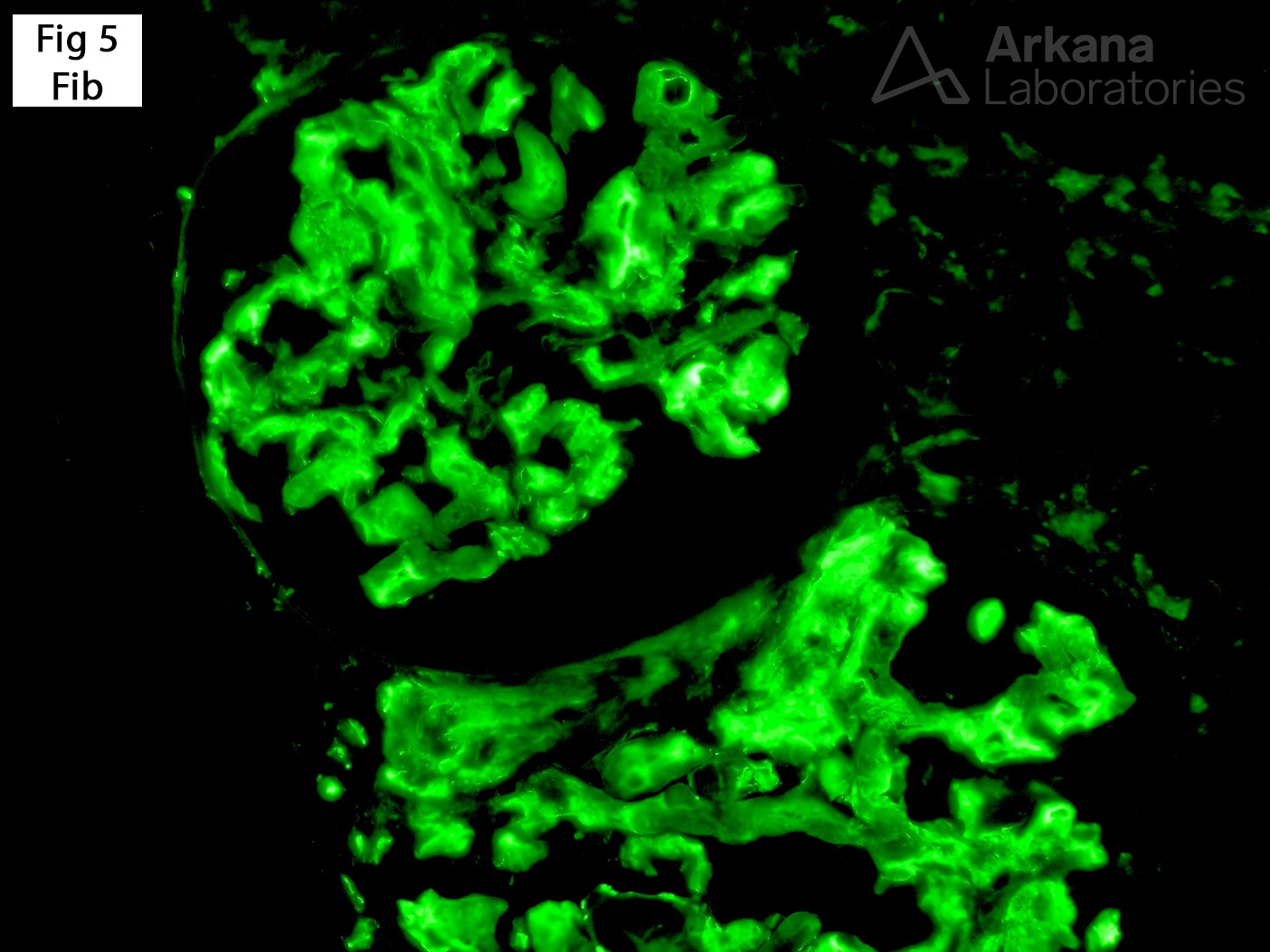A 65-year-old male, with no significant past medical history, presents with proteinuria and worsening renal function. The serum creatinine is 2.4 mg/dl and the UPCR is 2.5 g/g. Serum and urine protein electrophoresis with immunofixation shows the absence of monoclonal immunoglobulin. Free serum light chain ratio is within normal limits. Remaining of serologies are also negative/normal. A renal biopsy was performed and representative images are shown (Fig 1-5). The glomeruli are markedly enlarged and show massive deposition of PAS-pale (Fig 1), weakly argyrophilic (Fig 2), Congo red positive (Fig 3) amorphous material which shows apple green birefringence upon polarization (Fig 4), consistent with amyloid deposits. The amyloid deposits were limited to the glomeruli, without vascular or interstitial involvement. Immunofluorescence shows positive fibrinogen staining within the glomeruli (Fig 5), and there is no evidence of immunoglobulin deposition or light chain restriction. Electron microscopy (not shown) shows numerous small, non-branching, randomly-oriented fibrils within the mesangium and capillary walls. The overall biopsy findings are very suspicious for Fibrinogen Aα-chain amyloidosis. Confirmatory mass spectrometry shows an amino acid sequence abnormality in the fibrinogen alpha protein (p.Glu545Val).
Fibrinogen Aα-chain amyloidosis is a rare form of amyloidosis caused by mutations in FGA gene. The disease has an autosomal dominant pattern of inheritance; however, due to variable penetrance, there is frequently no family history of renal disease. Patients normally present with proteinuria and renal insufficiency with a rapid decline in renal function. Morphologically, the glomeruli show massive amyloid deposits with near obliteration of the glomerular architecture, with little to no interstitial or vascular involvement. Given that the liver is the only source of fibrinogen, a liver or liver/kidney transplant is the only known therapy to prevent further amyloid deposition in the native kidney or allograft.
Quick note: This post is to be used for informational purposes only and does not constitute medical or health advice. Each person should consult their own doctor with respect to matters referenced. Arkana Laboratories assumes no liability for actions taken in reliance upon the information contained herein.
